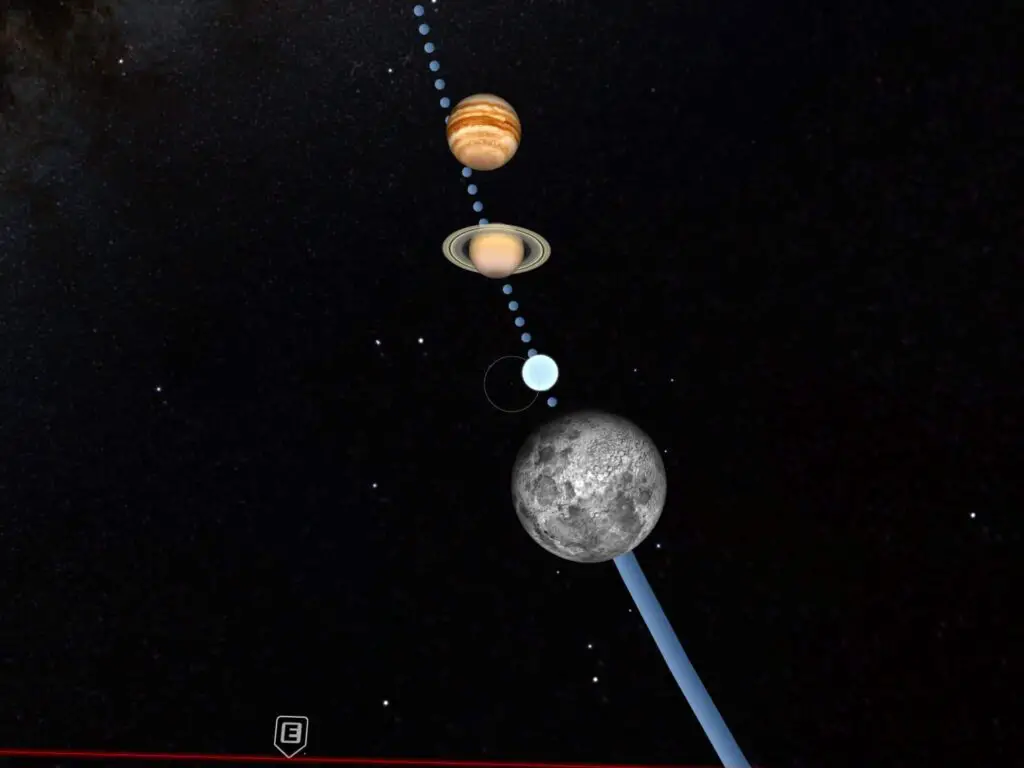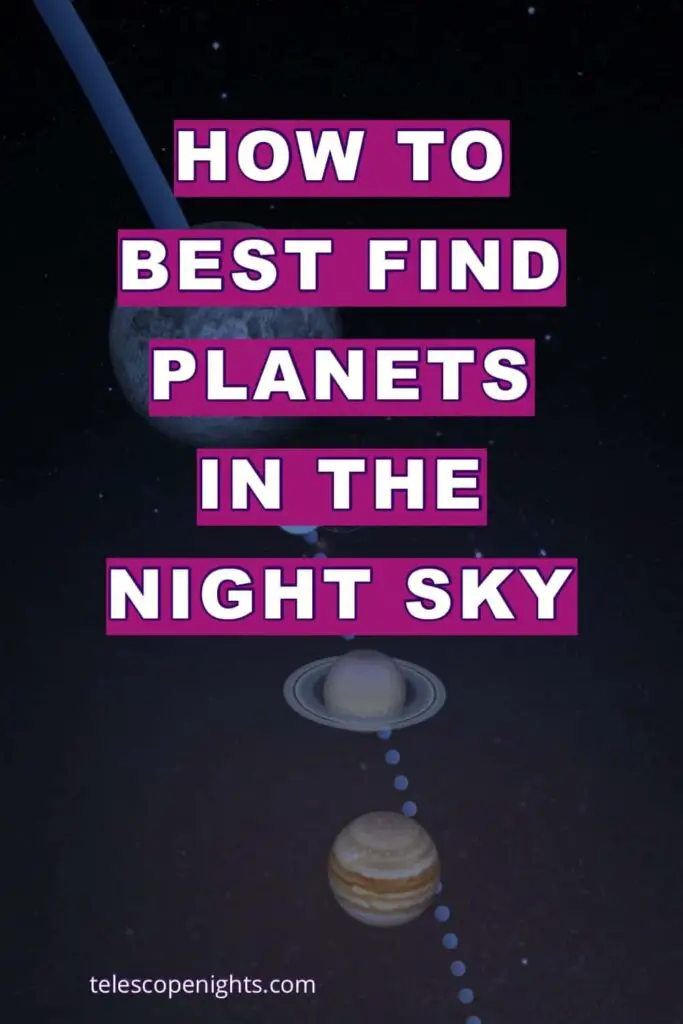There’s a saying: Stars twinkle and planets don’t. It’s true. But, is it enough to find planets when the sky appears full of stars? You will need a long focused and steady look to conclude about it twinkling or not and you may not be that confident in your assessment. Here I cover how to find planets at night in more ways than one.

How to find planets through a telescope
Finding planets with a telescope starts with knowing when and where they will be visible. You can use manual or online sky maps or apps for this. If you don’t have a GoTo, a good finderscope will help you get the telescope aligned with the planetary target.
Below are tried and tested ways of how to find planets when stargazing.
It’ll help to understand the celestial coordinate systems: horizontal and equatorial (I explain here). The first involves Alt-Az, where Alt is the elevation of the object from the horizon and Az is the horizontal angle relating to direction of the object. You can learn more about these angles in my article explaining the axes of alt/az telescope mounts.
Sky chart
A sky chart or star map, either digital or paper form, will help you locate planets by looking along the ecliptic that’s marked in the chart for the relevant time of year and hemisphere. They’re useful for finding constellations and other bright objects of interest. I have an article covering tips on using them.
You’ll also find the equatorial coordinates in atlases, guides, and books on astronomy that are written for backyard astronomers. Estimating sky distances easily is something that will help. I wrote about how you can use your hand for sky measures.
Software
You can use the software that comes with your planet-viewing telescope, if it’s included, to point to the different planets in the sky at the time.
Apps on your phone or tablet
You can use apps like those I wrote about — for your phone or similar device.
How to see planets on your phone? You install an app, such as Starview or Star Walk. Just simply activate the app and hold your phone or tablet towards the object in the sky. As long as you have your location set up in the app settings this will point out the planets in that part of the sky or you can look for info on the app to point you in the right direction to find them.
Learned experience
Practice and perseverance, as I wrote in my article on maximizing your views of planets, equals experience that pays off.
Of course, it helps to know the path that planets take across the sky, from east to west, similar to that of the Moon and Sun. This is the ecliptic, the plane of the solar system, where our solar system planets are confined because of their orbital geometry.
Once you get that right you’re half way there. Knowing the features of each planet takes you that bit further and staying informed with ‘what’s appearing in the sky tonight news’ will set it off.
Having these skills and practising will mean you’ll find the planets even without having the devices at hand to direct you.
Identifying the planets
You can see five planets with the naked eye: Mercury, Venus Mars, Jupiter, and Saturn. Here are some tips on seeing them.
Through a telescope, there are ones I regard as the best planets to observe.
These are the standouts because of their size and brightness in the sky, notably Saturn and Jupiter, and Jupiter being the ‘king’ of all the planets, the gas giant.
Standout features:
- Rings of Saturn
- Jupiter’s main moons you can identify
- Jupiter through a telescope showing its cloud bands
Mars has a reddish hue (but can be confused with the likes of the red supergiant star, Antares) and varies in its brightness depending on its distance from the Earth when observed.
Only on a rare occasion you might see Mercury. Since it has a close orbit to the Sun, you’ll only get a chance of seeing it 3 or so weeks of the year (see my article on viewing Mercury); and then only as a yellow star in the glow after sunset or near the eastern horizon before sunrise.1
It’s common for Venus to be known as the ‘Evening Star’ (see my article on viewing Venus).
At times, Venus is the first ‘star’ in the evening sky. You’ll also see this celestial body shining brightly in the early morning. In either case, you’ll get to see it for a few months of the year but never for more than 4 hours both after sunset and before sunrise. That’s because it’s orbit is limited to a wedge on either side of the Sun.1
The planets beyond Earth, namely Mars, Jupiter, and Saturn, can be seen at times, all night, positioned somewhere along the ecliptic.
If you’re using a telescope other than a GoTo computerized type, perhaps a Dobsonian, a finderscope will be valuable. Tip: It’s often worthwhile investing in a better design than the one that comes with your telescope to give you a wider field of view and a more comfortable positioning when using it for finding and viewing planets through a telescope. Know more about using finderscopes.
The Help Of Eyepieces
When looking at planets through a telescope, having the right eyepiece helps with seeing their features. The following is a guide on the eyepiece size and use.
Also, to preserve your night vision for clearer views, make sure to use a red flashlight or convert a conventional one into a red light torch.
stars twinkle but planets don’t
It’s rare for planets to twinkle like the stars. I wrote about this in covering the secretes behind stars twinkling.
Planets don’t twinkle because, while they are disks, and tiny ones at that, they are still big enough for their light to be unaffected by the ripples in the atmosphere… apart from times when the atmosphere is extra turbulent.
FAQs
Info sources
- Dickinson, Terence, 2019, The Planets in Nightwatch: A Practical Guide to Viewing the Universe. Firefly Books. l>

